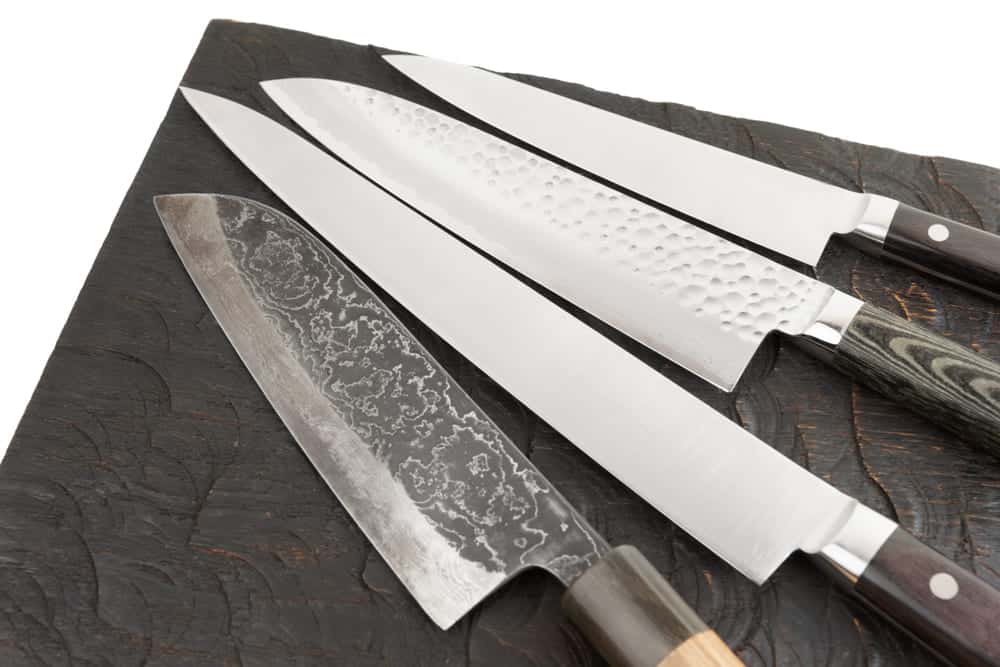
For everyone who is always found in the kitchen should have Japanese kitchen knives or the right knife in general. Even if you are known to knives, there are different types of knives with different material and edge grinds. That being said, gyuto vs. chef’s knife has always been the debate. With this article, we are everything that you need to know about these two knives.
Gyuto Knife vs Chef’s Knife
Gyuto Knife
In case you are a person who demands higher usefulness, gyuto knife is the right choice because of its flexibility. This knife is designed with a rounded belly that makes it suitable for different cutting jobs. We wouldn’t mind calling it an all-purpose knife. Gyuto knife is perfect for rock-chopping different edibles and foods. In addition, it makes a great option for slicing the food.
Generally, it’s known to be the beef sword when translated from the Japanese language. For the most part, it’s famous as a Japanese knife and was only used for cutting meat. This knife is known to be a combination of a European chef’s knife and a Japanese Nakiri knife. That being said, this knife will become an indispensable knife of the kitchen. In addition, it can be used with vegetables, meat, and fruits.
What we love about gyuto knife is that it can be used for chopping, dicing, slicing, and julienning. Moreover, it’s a perfect knife for disjointing the meat cuts. Gyuto knife tends to be longer as compared to other knives (eight to ten inches). This longer length makes it suitable for larger food items. It has double beveling, which makes it sharp on both sides of the blade.
Gyuto knife has a low and pointed tip that helps focus on smaller details (guess who is going to make perfect cuts now?). The knife is extremely lightweight, so you use it for a longer time. On the contrary, gyuto knife cannot be used for cutting with dense materials. But again, the best thing about gyuto knife is that it makes a perfect rocking motion for the users.
When it comes down to the blade profile, it can be French and/or German. The German profile has a round and bigger belly, while the French profile has a larger flat spot for push cutting. Gyuto knife is made with different steel alloys, such as VG10 steel, SG2 steel, and AUS10 A steel. However, all of these steel alloys are high in quality and durable.
Chef’s Knife
Chef’s knife is the cutting tool that can be widely used in food preparation. Initially, it was designed to disjoint the bigger beef cuts and slicing the meat. However, it has become an all-purpose knife for the majority of western chefs and cooks. Generally, this knife has an eight-inches blade in length with 1.5-inches inches in width. However, some models also range from 6-inches to 14-inches.
Chef’s knife comes in two different blades, such as a deep curve across the cutting edge and one with a straight edge. For the most part, Santoku knife is the Japanese version of chef’s knife. However, this variant can be lightweight, compact, and sharper, and even the blade shape is slightly different. On the other hand, there is a Chinese version that looks more like a cleaver.
The chef’s knife can perform multiple kitchen tasks with utter accuracy. It is suitable for chopping, mincing, and slicing. Also, it can be used for disjointing the large cuts (yes, just like gyuto knife). Usually, chef’s knife is made with a forged blade and stamped blade. The forged blades usually have a full tang which means the metal will run, ranging from the tip to the handle.
On the contrary, the stamped blade is cut from the cold-rolled steep and is treated t heat for higher temper and strength. As far as the blade is concerned, it can be made from stainless steel, carbon steel, ceramic blades, and laminated. Similarly, the handle can be made from wood, synthetic or composite material, and steel.
Also, while we are talking about chef’s knife, it is essential to talk about the edge. The chef’s knife has different types of edge, such as single grind, convex edge, double grind, hollow ground, or chisel edge. For the most part, chef’s knife can be paired with a paring knife and utility knife to create a complete knife collection for your kitchen!